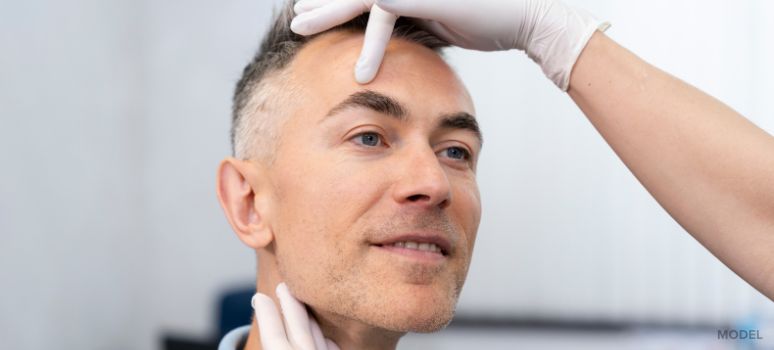The Rise of Male Plastic Surgery: Why More Men Are Opting for Facelifts

As reported by the American Society of Plastic Surgeons, there has been a 29% surge in the number of men undergoing cosmetic procedures since the year 2000, with facelifts being one of the favored choices. This article delves into the factors contributing to the mounting trend of male plastic surgery and examines why facelifts have gained widespread popularity among men.
Changing Societal Norms
Evolved societal norms have increased men’s openness to enhance their appearance through plastic surgery, leading to a surge in male cosmetic procedures. As this trend continues, more men are embracing surgical means for improving confidence and self-esteem.
Workplace Competitiveness
In fiercely competitive work environments, men may choose to undergo plastic surgery to boost their confidence and career prospects. This trend is particularly prevalent in industries where physical appearance plays a significant role in success, such as entertainment and modeling. Additionally, as more workplaces emphasize a youthful and energetic appearance, men may feel pressure to maintain a certain look to remain competitive. However, it’s important to note that while physical appearance can impact career opportunities, skills and experience should always be the primary factors determining professional success.
The Influence of Social Media

Social media’s pervasive influence has heightened people’s awareness of their appearance. This pressure has contributed to a rise in plastic surgery, with many individuals seeking procedures, such as facelifts, to enhance their appearance and boost their confidence. The constant bombardment of filtered and edited images on social media platforms can lead to a sense of inadequacy and a desire to meet unrealistic beauty standards. As a result, plastic surgery has become a more accessible solution for those seeking to achieve a more desirable look. However, it’s important to approach cosmetic procedures with caution and realistic expectations, as no surgery can guarantee perfection or complete satisfaction with one’s appearance.
Advancements in Plastic Surgery Techniques
Plastic surgery techniques have advanced significantly, making procedures safer and more accessible. As a result, more men are willing to consider facelifts, and other cosmetic procedures, to enhance their appearance and achieve a more youthful look. These advancements have also led to shorter recovery times and more natural-looking results, making plastic surgery a more attractive option for men who may have been hesitant to undergo such procedures in the past. With the continued evolution of plastic surgery techniques, the possibilities for achieving desired outcomes are constantly expanding, leading to greater satisfaction and confidence among patients.
Aging Baby Boomers
With the baby boomer cohort nearing retirement age, there is a growing inclination among men to undergo facelifts to maintain a youthful appearance, often in an effort to remain competitive in their professional and social circles. Considering that a significant number of men are sustaining active lifestyles throughout their later years, plastic surgery interventions such as facelifts have the potential to rejuvenate their appearance and augment their self-assurance, ultimately promoting an elevated sense of vigor and comprehensive well-being. As a result, it is probable that facelifts will persist as a favored alternative among men endeavoring to uphold their optimal appearance and enhance their well-being as they progress in age.
Frequently Asked Questions
1. Is plastic surgery safe for men?
Plastic surgery is safe for men when performed by a board-certified plastic surgeon. However, there are risks involved, and it is important to discuss them with your surgeon before undergoing any procedure.
2. How long does it take to recover from a facelift?
The recovery period following a facelift procedure varies. In general, patients should anticipate taking one to two weeks off work and avoiding strenuous activities for several weeks. It is imperative to adhere to the post-operative instructions provided by the surgeon to ensure optimal healing and avoid complications.
3. How long do the results of a facelift last?
The duration of the effects of a facelift can extend up to a decade or more, contingent on the individual and their lifestyle. Maintaining a healthy way of life is crucial for sustaining the outcome of the procedure.
4. Who is a good candidate for a facelift for men?
Men who have visible signs of aging in the face, such as sagging skin, wrinkles, and loss of volume, may be good candidates for a facelift. It is also important that the candidate is in good overall health and has realistic expectations for the procedure. A consultation with a board-certified plastic surgeon can help determine if a facelift is the best option for achieving the desired results.
Men’s Rising Preference for Facelifts: Consulting a Qualified Plastic Surgeon
The increasing trend of men choosing facelift surgery can be attributed to changing societal norms, the desire to maintain a competitive edge, advancements in plastic surgery techniques, and the aspiration to retain a youthful appearance. It is important to carefully consider and consult with a qualified plastic surgeon before pursuing any medical procedure. Memorial Plastic Surgery in Houston, TX offers an experienced board-certified plastic surgeon specializing in facial plastic surgery, including facelifts for men. Schedule a consultation with us today to achieve your aesthetic goals safely and effectively.
*This blog is created and maintained for informational purposes only. The images present may not accurately reflect actual cases per individual. Individual cases are unique, and the descriptions and solutions will vary per patient.

















